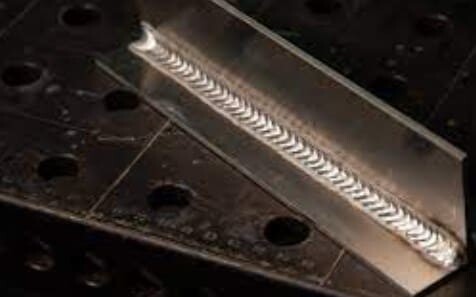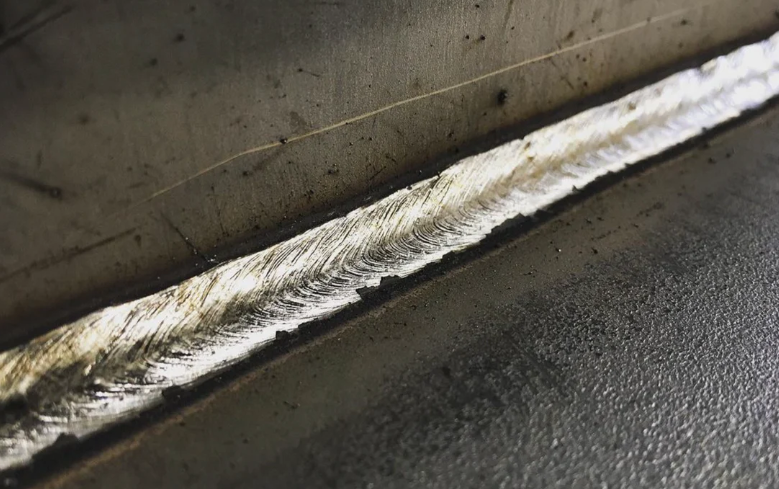Arc welding offers multiple solutions depending on material, environment, skill level and production needs. Four widely used arc processes are: MIG (GMAW), TIG (GTAW), Stick (SMAW), and Flux-Cored (FCAW). Each has distinct advantages: MIG for speed and general fabrication; TIG for precision and cosmetic welds; Stick for rugged outdoor work; FCAW for high-deposition, wind-tolerant welding. This guide compares how they work, their pros and cons, and practical selection tips.
I. What are the Main Types of Welding?
All four are arc welding processes — they use an electric arc to melt parent metal and filler. They differ mainly in how filler metal is delivered and how the weld pool is shielded from the atmosphere:
Filler delivery: continuous wire feed (MIG/FCAW), a separate rod or wire (TIG), or a flux-coated stick electrode (Stick).
Shielding: external inert/active gas (MIG/TIG) or flux that decomposes to form shielding gases and slag (FCAW/Stick).
Slag: TIG and MIG leave little to no slag; FCAW and Stick produce slag that must be removed between passes.
1. MIG Welding (Gas Metal Arc Welding - GMAW)— fast, forgiving, great for production
How it Works: In MIG welding, a continuously fed solid wire electrode is used; an external shielding gas protects the molten weld pool from atmospheric contamination.The arc is generated between the wire and the workpiece; the wire melts and becomes filler metal.

1) Strengths
Relatively easy to learn and control; good for production and general fabrication.
High welding speed and good deposition rates – helpful in manufacturing and repeated jobs.
Versatile across many materials (mild steel, stainless, aluminium in some cases) when set up correctly.
Cleaner weld appearance and less post-weld clean-up compared to some older methods.
2) Limitations
Requires external shielding gas (in most cases) which means less portability (especially outdoors or in windy conditions).
Not always the best for very thick materials, or overhead welding, unless special equipment and settings are used.
Weld access, joint fit-up and material cleanliness still matter for best results.
3) Best suited for
General fabrication shops, production welding, medium thickness work, applications where speed and decent quality matter more than ultra-refined finish. If you are looking for a good “all-rounder”, MIG is often a strong starting point.
2. TIG Welding (Gas Tungsten Arc Welding - GTAW)— precision and metallurgy control
How it works: Tungsten inert gas (TIG welding) uses a non-consumable tungsten electrode to produce the arc, and an inert gas (often argon or argon/helium mix) shields the weld pool. The filler metal (if used) is manually added.
 effect.jpg)
1) Strengths
Exceptional weld quality: precise control, minimal spatter, excellent appearance.
Excellent for thin materials, exotic metals and applications where aesthetics, precision or minimal heat-input are critical.
Very good for when weld integrity, corrosion resistance or visual finish are major criteria.
2) Limitations
Higher operator skill required: controlling arc, tungsten, filler, shielding gas, and travel speed takes practice.
Slower than MIG in many cases, and higher equipment cost (gas supply, sophisticated torch, etc).
Less suited for dirty surfaces, outdoor, windy conditions unless specially equipped.
3) Best suited for
Fabrication of high-precision components, thin wall tubing, aerospace, vessel fabrication, custom work where appearance and integrity matter. If your priority is weld excellence rather than maximum speed, TIG is the right choice.
3. Stick Welding (Shielded Metal Arc Welding - SMAW)— rugged, simple, field-ready
How it Works: Stick welding uses a consumable rod electrode coated in flux. The electrode acts as both arc conductor and filler. The flux coating disintegrates to create shielding gas and slag to protect the molten weld metal.

1) Strengths
Very portable: minimal equipment compared to gas-shielded methods. Useful in field, outdoors, remote or rugged environments.
Tolerant of rust, dirt and less-than-perfect surfaces compared to more precision-based methods.
Low initial equipment cost; many welders start their skill journey here.
2) Limitations
Slower deposition, more downtime for rod change-out, slag removal after welding.
Weld finish is rougher; more post-weld clean-up and less “cosmetic” quality. Weld quality may be lower than MIG or TIG in many cases.
Operator skill still matters for good results; controlling arc length, travel, heat input remain important.
3) Best suited for
Construction, heavy equipment repair, pipeline work, outdoors, situations where portability and adaptability are more critical than ultra-refined finish. If you need a go-anywhere, tough-job method, stick welding is reliable.
4. Flux Core Welding (FCAW)— high deposition, outdoor capable
How it works: Flux core welding uses a continuously fed tubular wire filled with flux. Some versions require external shielding gas (dual-shield), others are self-shielded by the flux itself. As the wire melts, the flux produces shielding gas and slag, protecting the weld.

1) Strengths
High deposition rate: more filler metal in less time, making it efficient for heavy fabrication.
Can be used outdoors or in less ideal conditions (especially self-shielded versions), since some versions don’t rely solely on external gas.
Good balance of speed, portability and versatility: sits between MIG and stick in many ways.
2) Limitations
May produce more fumes and slag; post-weld clean-up may be required.
Some versions still need shielding gas or careful setup; not always the best for extremely thin sections or ultra-fine welds.
Weld finish and appearance may lag behind TIG or high-end MIG methods.
3) Best suited for
Heavy fabrication, structural steel, shipbuilding, construction sites, conditions where thickness, speed and robustness matter. If you’re welding thick plates, heavy joints or need efficient deposition, flux-core is a very good choice.
II. MIG vs TIG vs Stick vs Flux Core Welding Comparison: A Summary Table
| Characteristic | MIG (GMAW) | TIG (GTAW) | Stick (SMAW) | Flux-Cored (FCAW) |
|---|
| Typical use | Fabrication, auto repair, general production | Precision, aerospace, thin metals | Outdoor repair, heavy sections, construction | Structural steel, shipbuilding, outdoor work |
| Weld appearance / finish | Good, little cleanup | Best — very clean, precise | Rougher, slag removal needed | Moderate; slag removal required |
| Learning curve | Easiest | Hardest | Moderate | Moderate |
| Speed / deposition | High | Slow | Moderate | High |
| Portability / outdoor | Limited (gas cylinder) | Poor | Good (no gas) | Good (self-shielded wire available) |
| Cost (equipment) | Moderate | Higher (torches, gas) | Low to moderate | Moderate |
| Best for | Production runs, long welds | Thin sections, critical welds | Dirty/rusty steel outdoors | Thick sections, windy/outdoor conditions |
III. Which Welding Process Is Right For You?
1) Consider Your Project Requirements:
For high-speed production and versatility, MIG welding is an excellent choice.
If you prioritize quality and control, TIG welding is the preferred option.
Stick welding excels in outdoor and challenging environments where versatility is key.
Flux core welding offers a balance of speed, versatility, and quality, making it suitable for various applications.
2) Assess Your Skill Level and Resources:
Beginners may find MIG and flux core welding more accessible due to their simplicity.
Experienced welders seeking ultimate control and quality may opt for TIG welding.
Stick welding is ideal for those who require portability and versatility in adverse conditions.
IV. Buyer's note — basic shop setup considerations
Power and duty cycle: Match the welder’s rated output and duty cycle to the thickness and length of weld runs you’ll do. Low-duty machines overheat on long production runs.
Consumables & shielding gas: MIG/TIG require gas handling and storage; FCAW/Stick reduce or eliminate gas needs but increase slag/cleanup. Factor consumable availability and cost into total operating cost.
Safety & ventilation: FCAW generates more fumes; provide extraction or good ventilation. All arc processes require appropriate PPE (helmets, gloves, protective clothing).
V. Common beginner mistakes (and fixes)
Wrong polarity or wire type: Causes erratic arc and poor deposition — set equipment to the process-recommended polarity and use the correct wire/electrode.
Poor joint prep: Especially for TIG and MIG — clean, fit and tack joints before welding.
Incorrect travel speed/heat input: Too fast = lack of fusion; too slow = burn-through or excess penetration. Practice on scrap with the same thickness.
Conclusion
For general shop work and fast production: start with MIG, and add FCAW for heavy structural jobs or outdoor tolerance.
For thin, precision, or exotic-metal work: prioritize TIG and investment in operator training.
For field service, remote or heavily contaminated environments: Stick or self-shielded FCAW are reliable choices.
For high-quality welding machines and equipment, consider the Megmeet brand MIG/MAG/TIG/Stick/SAW/Laser welding machines, which is renowned for its reliability, performance, and innovation. Whether you're a hobbyist, professional welder, or industrial fabricator, Megmeet provides the tools you need to achieve exceptional results in your welding endeavors.
Related articles
1. 11 Types of Arc Welding: Applications & Benefits
2. 10 Welding Machine Types and Their Applications
3. A Comprehensive Guide to Different Types of Welding Procedures
4. 3 Common Types of Welding Techniques Used for Aluminum
5. Robotic Welding: Definition, Types, Processes, Pros and Cons




 effect.jpg)


